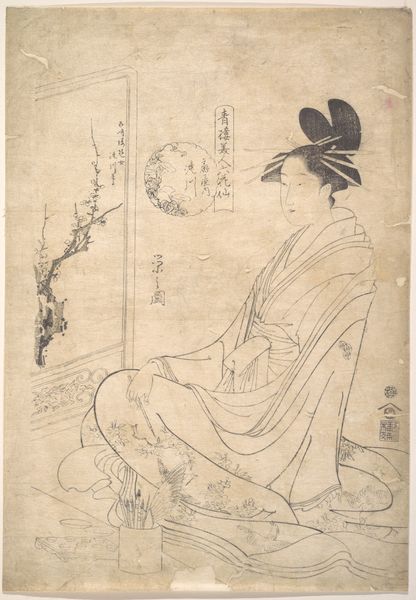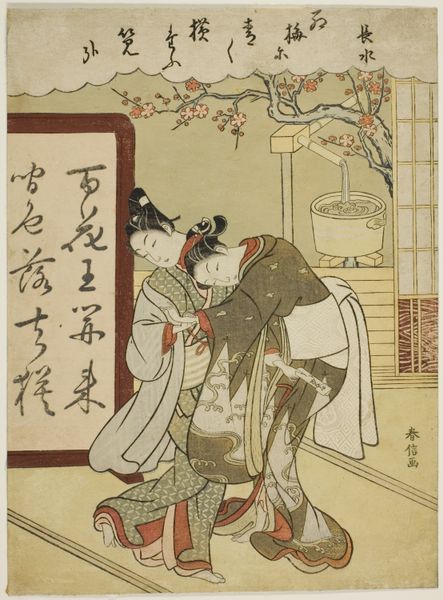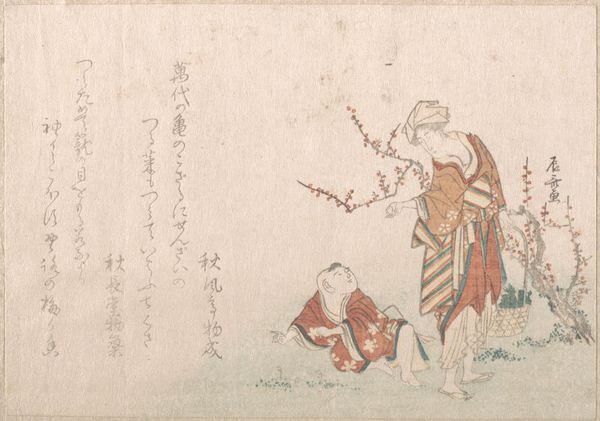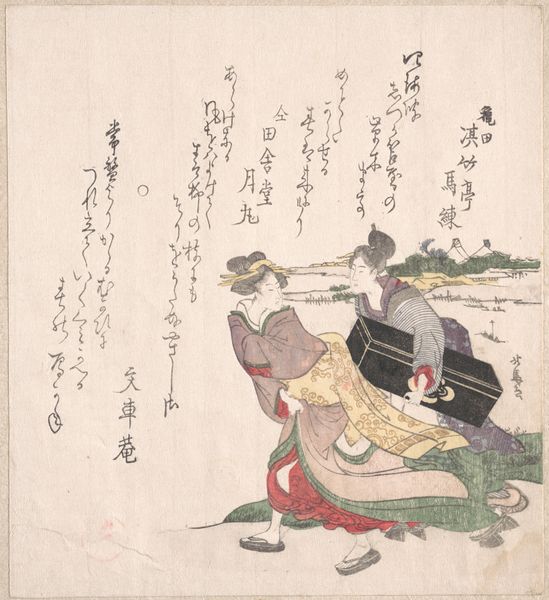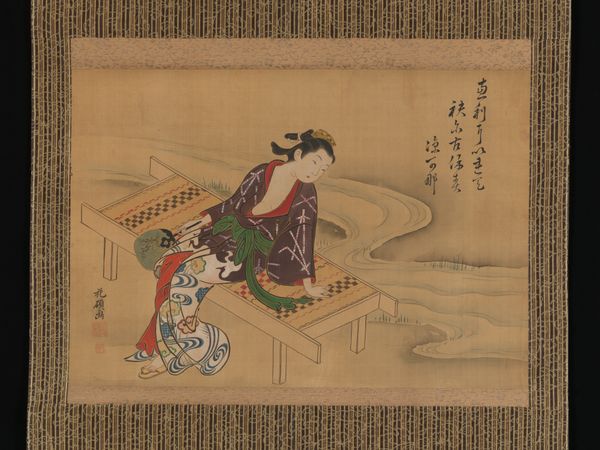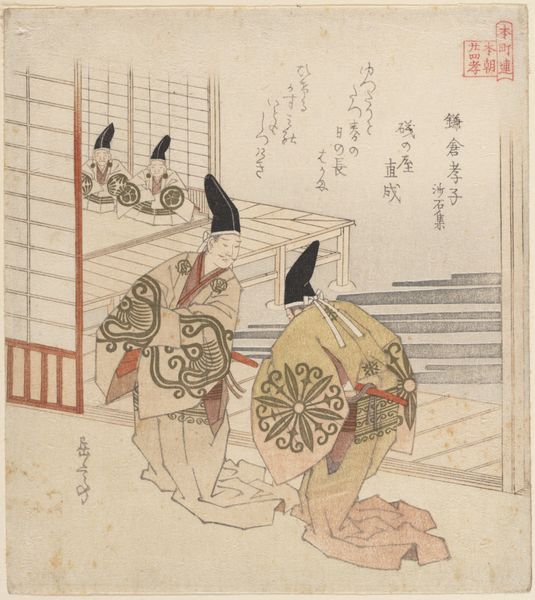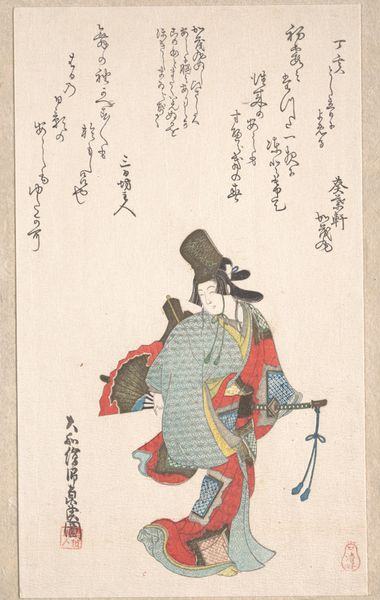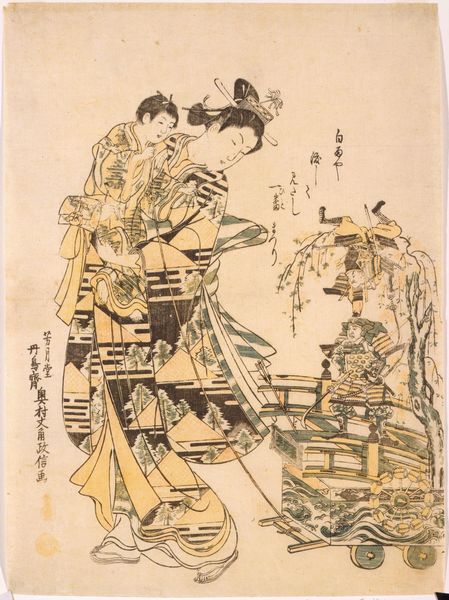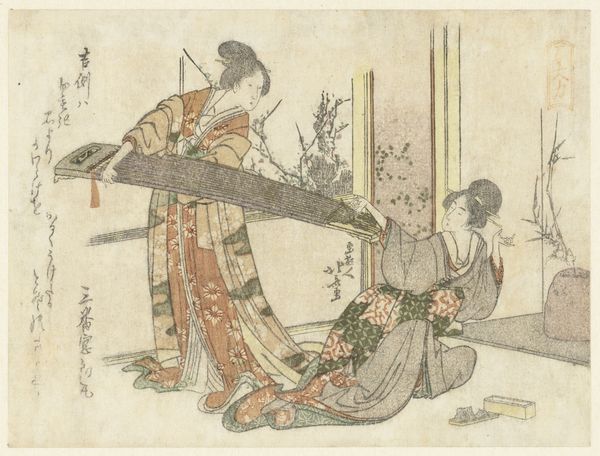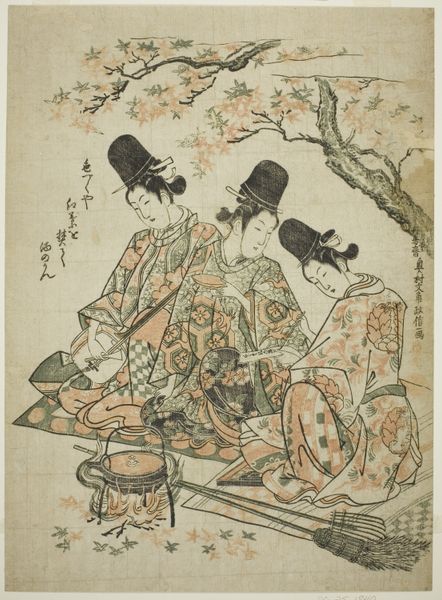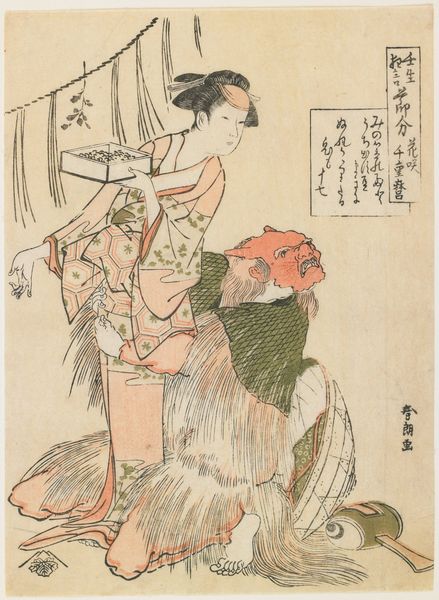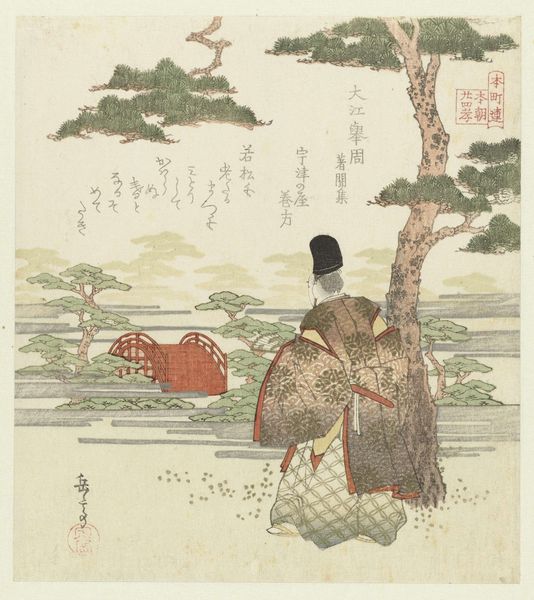
History of Kamakura: Poem-bridge of Egara Tenjin Shrine 19th century
0:00
0:00
print, woodblock-print
#
narrative-art
# print
#
asian-art
#
landscape
#
ukiyo-e
#
figuration
#
woodblock-print
#
genre-painting
Dimensions: 8 1/4 x 7 3/16 in. (21 x 18.3 cm)
Copyright: Public Domain
Kubo Shunman created this woodblock print titled "History of Kamakura: Poem-bridge of Egara Tenjin Shrine." Notice the plum blossoms in the upper right. In Japanese art, these blossoms symbolize resilience, renewal, and the coming of spring, often linked to hope and perseverance. The woman's pointing gesture draws our eyes toward these symbols of renewal, a pose reminiscent of classical depictions of muses inspiring poets, yet imbued with a distinctly Japanese aesthetic. Compare this with Botticelli's "Primavera", where Flora scatters flowers, a gesture echoing the promise of spring. It speaks to the enduring human fascination with nature's cycles. The bridge itself is another symbolic element. Bridges often signify transitions or connections between two states, whether physical or metaphorical. It’s an archetypal motif that appears across cultures, representing the journey from one state to another, a liminal space where change occurs. The image stirs a longing for the cyclical return, for the inevitable promise of rebirth and renewal found deep within our collective psyche.
Comments
No comments
Be the first to comment and join the conversation on the ultimate creative platform.
